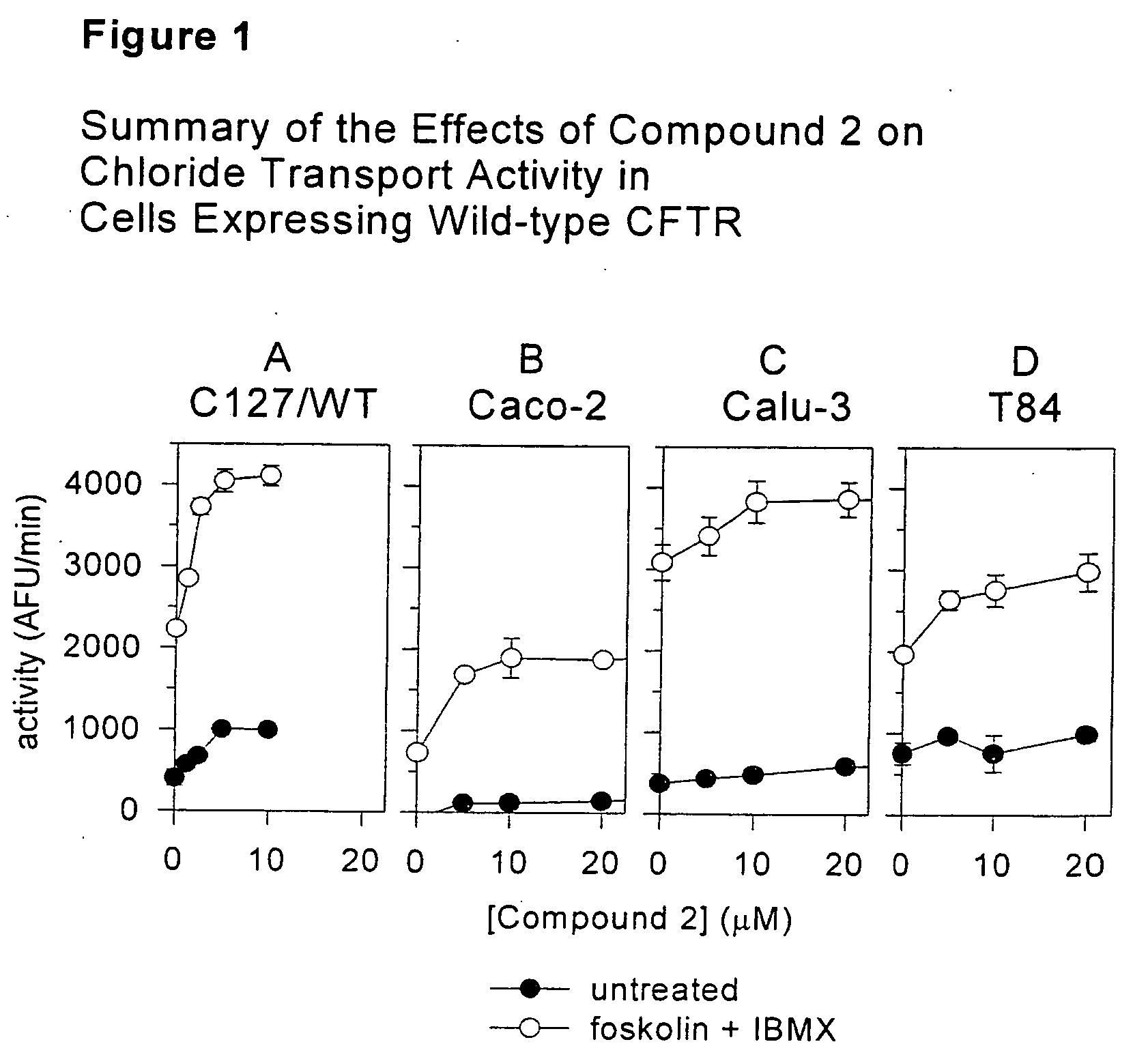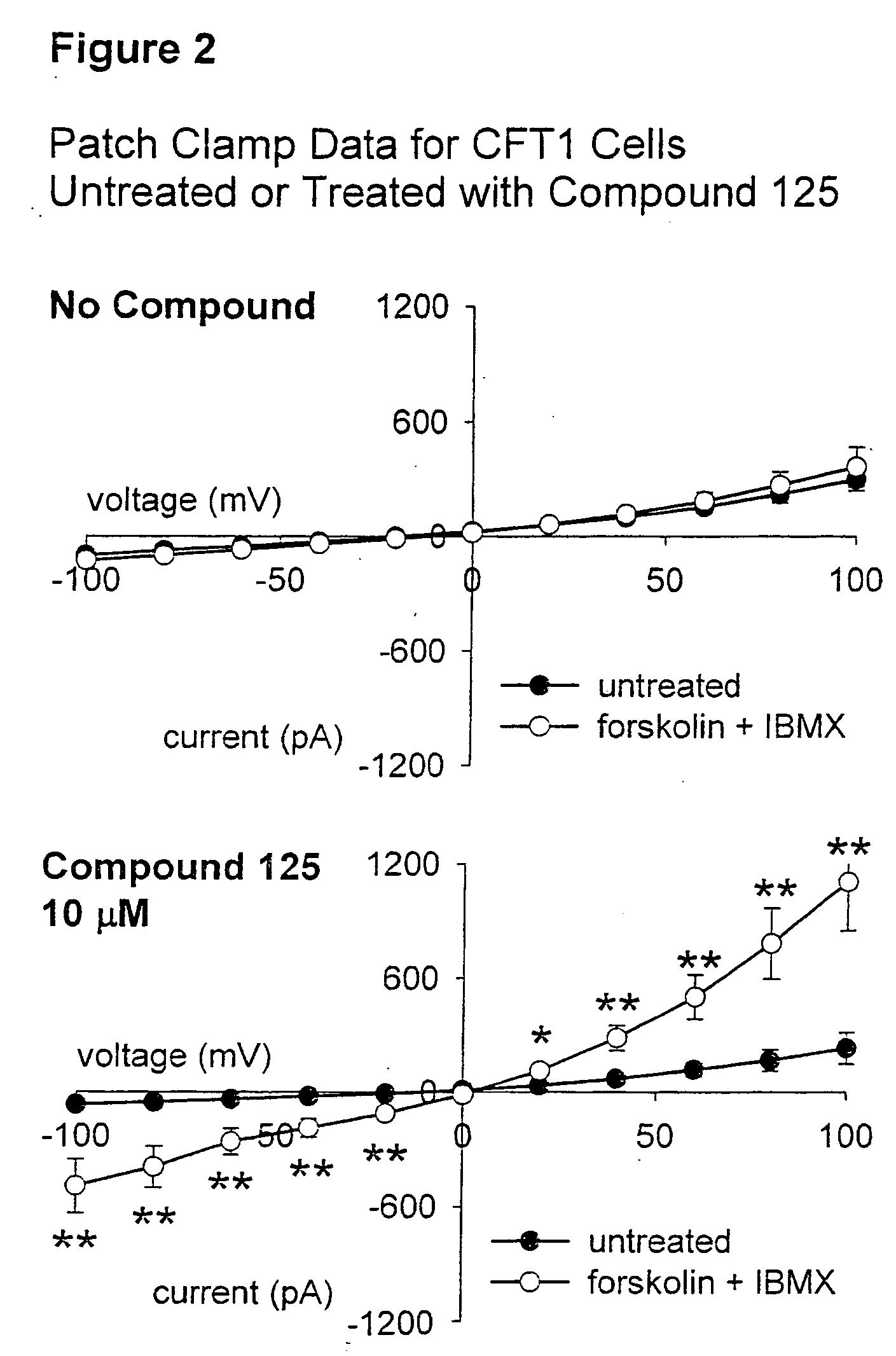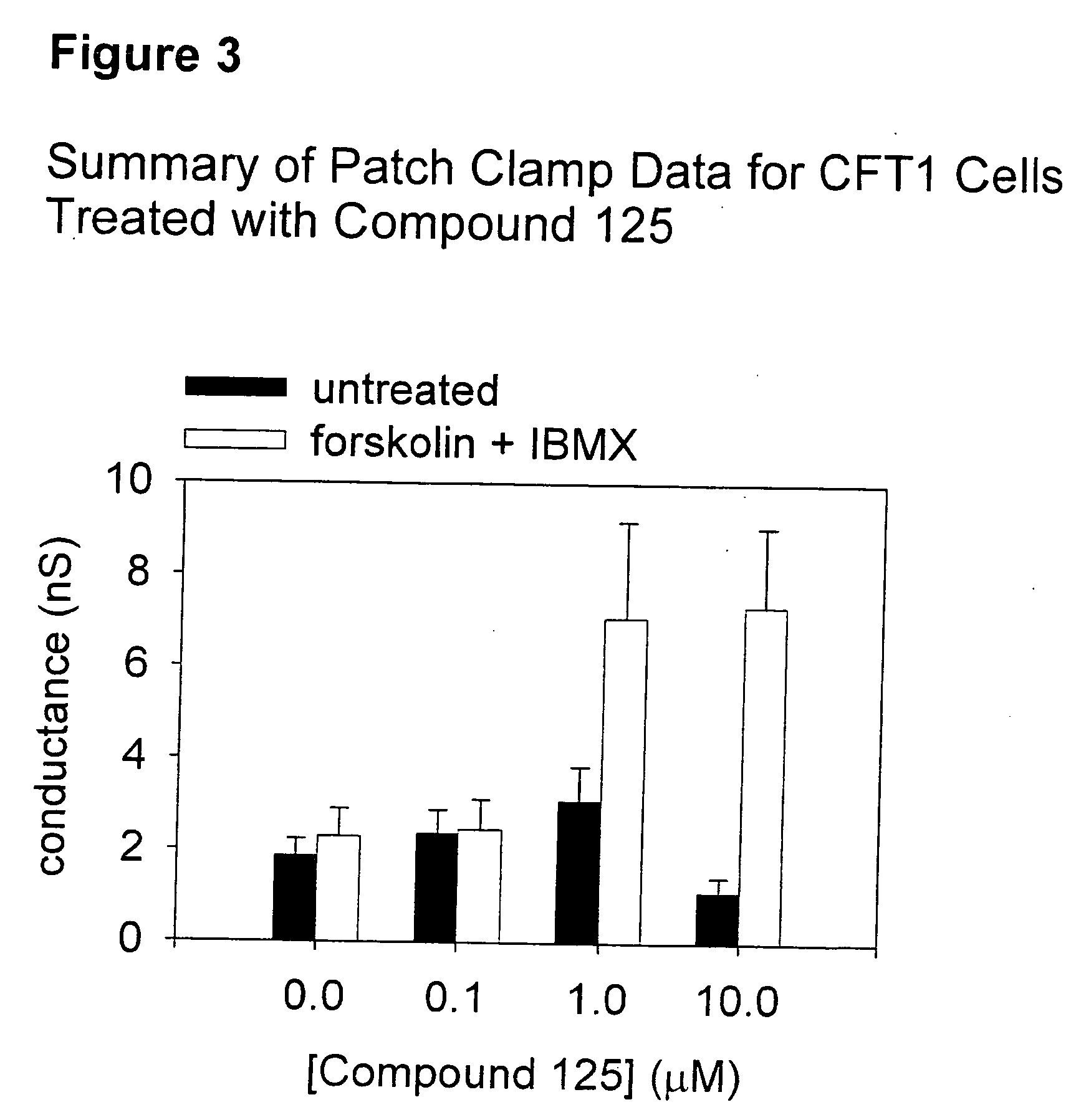Tetrahydroisoquinoline derivatives for treating protein trafficking diseases
- Summary
- Abstract
- Description
- Claims
- Application Information
AI Technical Summary
Benefits of technology
Problems solved by technology
Method used
Image
Examples
example 1
(±)-1,2,3,4-Tetrahydroisoquinoline-3-carboxylic acid(4-chlorophenyl)amide (Intermediate 1)
Step 1) Preparation of (±)-N-(tert-Butoxycarbonyl)-tetrahydroisoquinoline-3-carboxylic acid(4-chlorophenyl)amide
[0087] To stirred solution of (±)-N-(tert-butoxycarbonyl)-1,2,3,4-tertrahydroisoquinoline-3-carboxylic acid (10.0 g, 3.61 mmol) in chloroform (180 mL) was added 1-[3-(dimethylamino)propyl]-3-ethylcarbodiimide hydrochloride (7.25 g, 37.8 mmol) followed by 4-chloroaniline (4.39 g, 34.4 mmol). After overnight stirring, the reaction mixture was washed with aqueous sodium bicarbonate solution, dried (sodium sulfate) and concentrated to afford crude product as a near colorless, foamy solid. This material was used in the next step without further purification.
Step 2) Preparation of Intermediate 1
[0088] To a stirred solution of the product of step I in methylene chloride (45 mL) was added trifluoroacetic acid (20 mL, 260 mmol). After 1.5 hours, more trifluoroacetic acid (5 mL, 65 mmol) wa...
example 2
(±)-2-(3-Phenoxybenzoyl)-1,2,3,4-tetrahydroisoquinoline-3-carboxylic acid (Intermediate 2)
Step 1) Preparation of (±)-2-(3-Phenoxybenzoyl)-1,2,3,4-tetrahydroisoquinoline-3-carboxylic acid ethyl ester
[0089] To a stirred solution of (±)-1,2,3,4-tetrahydroisoquinoline-3-carboxylic acid ethyl ester (6.26 g, 30.5 mmol) and 3-phenoxybenzoic acid (7.19 g, 33.6 mmol) in chloroform (150 mL) was added 1-[3-(dimethylamino)propyl]-3-ethylcarbodiimide hydrochloride (6.43 g, 33.5 mmol). The reaction was allowed to proceed overnight and then washed with aqueous sodium bicarbonate solution, dried (sodium sulfate) and concentrated. The crude product was purified by flash chromatography over silica (hexanes / ethyl acetate) to afford 12.07 g (99%) of product as a colorless gum. In chloroform-d solvent, the proton NMR spectra of this compound appears as a 55:45 mixture of rotamers: 1H NMR (CDCl3) δ 7.46-6.90 (m, 13H), 5.46 (t, J=5.6 Hz, 0.55H), 5.18 (d, J=17.6 Hz, 0.45H), 4.80-4.73 (m, 0.45H), 4.68-4.5...
example 3
(S)-1,2,3,4-Tetrahydroisoquinoline-3-carboxylic acid(4-pentylphenyl)amide (Intermediate 3)
Step 1) Preparation of (S)—N-(tert-Butoxycarbonyl)-1,2,3,4-tetrahydroisoquinoline-3-carboxylic acid(4-pentylphenyl)amide
[0091] To a stirred solution of (S)—N-(tert-butoxycarbonyl)-1,2,3,4-tetrahydroisoquinoline-3-carboxylic acid (10.0 g, 36.1 mmol) and 4-pentylaniline (4.91 g, 30.1 mmol) in chloroform (150 mL) was added 1-[3-(dimethylamino)propyl]-3-ethylcarbodiimide hydrochloride (6.92 g, 36.1 mmol). The reaction was allowed to proceed overnight and then washed with aqueous sodium bicarbonate solution, dried (sodium sulfate) and concentrated to afford crude product as an off-white, foamy solid. This material was used in the next step without further purification.
Step 2) Preparation of Intermediate 3
[0092] The product of step 1 was dissolved in methylene chloride (40 mL) and treated with trifluoroacetic acid (20 mL). After stirring for 2.5 hours the reaction was concentrated and the residue...
PUM
| Property | Measurement | Unit |
|---|---|---|
| Electrical conductance | aaaaa | aaaaa |
Abstract
Description
Claims
Application Information
 Login to View More
Login to View More - R&D
- Intellectual Property
- Life Sciences
- Materials
- Tech Scout
- Unparalleled Data Quality
- Higher Quality Content
- 60% Fewer Hallucinations
Browse by: Latest US Patents, China's latest patents, Technical Efficacy Thesaurus, Application Domain, Technology Topic, Popular Technical Reports.
© 2025 PatSnap. All rights reserved.Legal|Privacy policy|Modern Slavery Act Transparency Statement|Sitemap|About US| Contact US: help@patsnap.com



